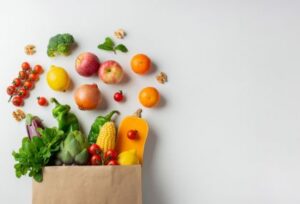目次
Japanese Cuisine (和食 – Washoku)
Japanese cuisine, known as “Washoku,” is celebrated for its emphasis on fresh, seasonal ingredients, meticulous preparation, and presentation. It reflects a harmonious balance of flavors, textures, and colors. Here are five popular Japanese dishes along with their recipes:
- Sushi (寿司)
- Ingredients:
- Sushi rice
- Fresh fish (salmon, tuna, etc.)
- Nori (seaweed)
- Soy sauce, wasabi, and pickled ginger for serving
- Recipe:
- Prepare sushi rice seasoned with a mixture of rice vinegar, sugar, and salt.
- Slice the fresh fish into thin pieces.
- Place a sheet of nori on a bamboo sushi mat, spread rice evenly, add fish slices, and roll it tightly.
- Slice the roll into bite-sized pieces and serve with soy sauce, wasabi, and pickled ginger.
- Ingredients:
- Ramen (ラーメン)
- Ingredients:
- Chinese-style wheat noodles
- Broth (soy sauce, miso, or salt-based)
- Toppings (chashu pork, green onions, seaweed, and egg)
- Recipe:
- Cook the noodles according to the package instructions.
- Prepare the broth with your choice of flavoring (soy sauce, miso, or salt).
- Assemble the ramen by placing cooked noodles in a bowl, adding broth, and topping it with chashu pork, green onions, seaweed, and a boiled egg.
- Ingredients:
- Tempura (天ぷら)
- Ingredients:
- Seafood or vegetables (shrimp, sweet potato, etc.)
- Tempura batter (flour, egg, ice-cold water)
- Vegetable oil for frying
- Recipe:
- Dip seafood or vegetables in tempura batter.
- Fry in hot oil until golden brown and crispy.
- Serve with a dipping sauce made from soy sauce, mirin, and dashi broth.
- Ingredients:
- Yakitori (焼き鳥)
- Ingredients:
- Skewered and grilled chicken (thighs, wings, or other cuts)
- Tare sauce (soy sauce, mirin, sake, sugar)
- Recipe:
- Skewer bite-sized pieces of chicken.
- Grill the skewers, brushing with tare sauce until fully cooked.
- Serve hot and garnish with salt or additional tare sauce.
- Ingredients:
- Okonomiyaki (お好み焼き)
- Ingredients:
- Cabbage, flour, eggs, dashi broth
- Optional toppings (pork, seafood, green onions)
- Recipe:
- Mix shredded cabbage, flour, eggs, and dashi to make a batter.
- Cook the batter on a griddle, adding optional toppings.
- Flip and cook until both sides are golden brown.
- Drizzle with okonomiyaki sauce, mayonnaise, and bonito flakes.
- Ingredients:
Characteristics of Japanese Food Culture:
I can tell 5 things of Characteristics of Japanese Food Culture that I found when I compared with that in England, America, Brasil and China.
- Seasonality:
- Japanese cuisine heavily emphasizes seasonal ingredients, with menus changing to reflect the freshest produce and seafood available each season.
- Presentation and Aesthetics:
- Washoku places a strong emphasis on the presentation of dishes, incorporating artistic arrangements to enhance the dining experience.
- Umami Flavor:
- The concept of umami, the fifth basic taste, is integral to Japanese cuisine. Dishes are crafted to achieve a balance of sweet, salty, sour, bitter, and umami flavors.
- Rituals and Etiquette:
- Japanese dining is often accompanied by rituals and etiquette, such as saying “Itadakimasu” before a meal and showing appreciation by saying “Gochisousama” afterward.
- Diversity and Adaptability:
- Japanese cuisine has a remarkable diversity, ranging from traditional kaiseki meals to street food like yakitori. It has also adapted to incorporate international influences while maintaining its core principles.






コメント